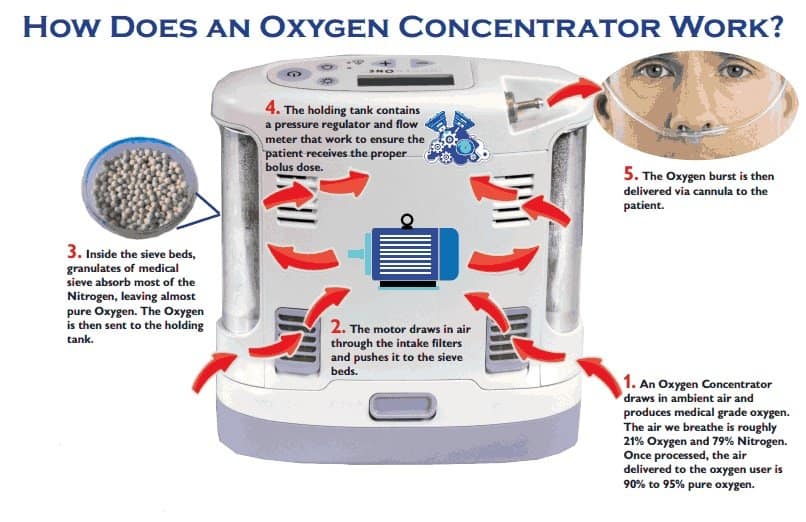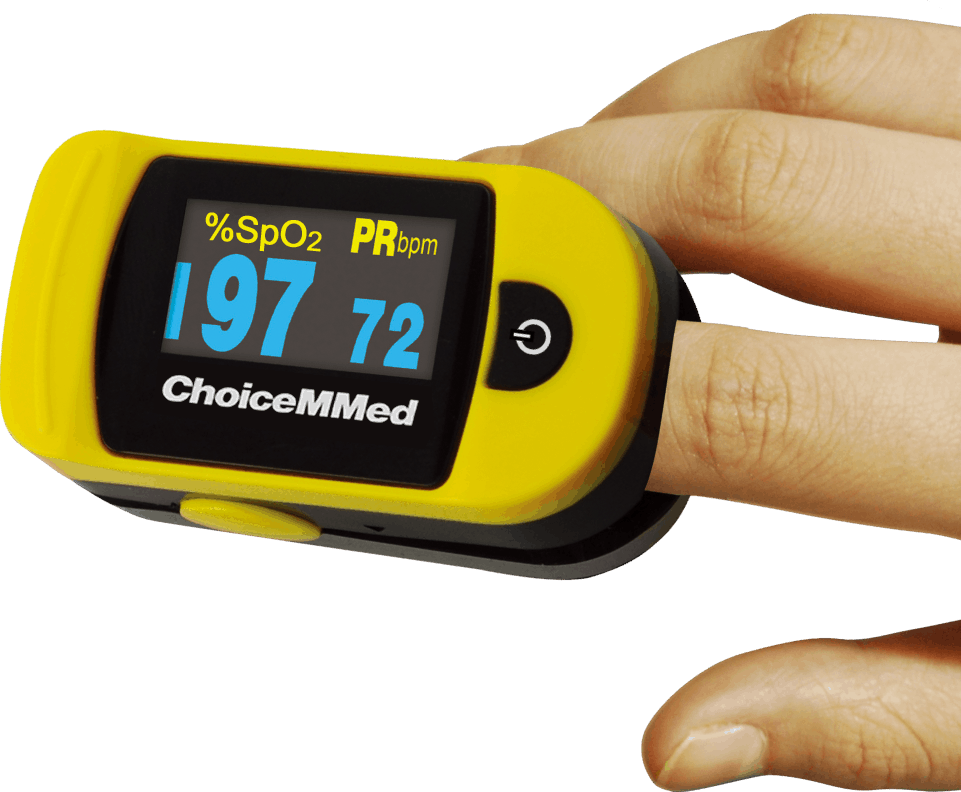FDA WARNS: Giving yourself too much or too little oxygen can be dangerous. Talk with your doctor about safely using pulse oximeters and oxygen concentrators at home.
To survive, we need oxygen going from our lungs to the cells in our body. Sometimes the amount of oxygen in our blood can fall below normal levels. Asthma, lung cancer, chronic obstructive pulmonary disease (COPD), the flu, and COVID-19 are some of the health issues that may cause oxygen levels to drop. When the levels are too low, we may need to take extra oxygen, known as home oxygen therapy.
One way to get extra oxygen into the body is by using an oxygen concentrator. Oxygen concentrators are medical devices required to be sold and used only with a prescription.
You should not use an oxygen concentrator at home unless it has been prescribed by a health care provider. Giving yourself oxygen without talking to a doctor first may do more harm than good. You may end up taking too much or too little oxygen. Deciding to use an oxygen concentrator without a prescription can lead to serious health problems, such as oxygen toxicity caused by receiving too much oxygen. It can also lead to a delay in receiving treatment for serious conditions like COVID-19.
Even though oxygen makes up about 21 percent of the air around us, breathing high concentrations of oxygen may damage your lungs. On the other hand, not getting enough oxygen into the blood, a condition called hypoxia, could damage the heart, brain, and other organs.
Find out if you really need oxygen therapy by checking with your health care provider. If you do, your health care provider can determine how much oxygen you should take and for how long.
What do I need to know about oxygen concentrators?
Oxygen concentrators take in air from the room and filter out nitrogen. The process provides the higher amounts of oxygen needed for oxygen therapy.

Concentrators may be large and stationary or small and portable. Concentrators are different than tanks or other containers supplying oxygen because they use electrical pumps to concentrate the continuous supply of oxygen that comes from the surrounding air.
You may have seen oxygen concentrators for sale online without a prescription. At this time, the FDA has not approved or cleared any oxygen concentrators to be sold or used without a prescription.

When using an oxygen concentrator for home oxygen therapy:
- Do not use the concentrator, or any oxygen product, near an open flame or while smoking.
- Place the concentrator in an open space to reduce chances of device failure from overheating.
- Do not block any vents on the concentrator since it may impact device performance.
- Periodically check your device for any alarms to make sure you are getting enough oxygen.
If you are prescribed an oxygen concentrator for chronic health problems and have changes in your breathing or oxygen levels, or have symptoms of COVID-19, call your health care provider. Do not make changes to the oxygen levels on your own.
How are my oxygen levels monitored at home?
Oxygen levels are monitored with a small device called a pulse oximeter, or pulse ox.
Pulse oximeters are usually placed on a fingertip. The devices use beams of light to indirectly measure the level of oxygen in the blood without having to draw a blood sample.
What do I need to know about pulse oximeters?
As with any device, there is always a risk of an inaccurate reading. The FDA issued a safety communication in 2021 informing patients and health care providers that although pulse oximetry is useful for estimating blood oxygen levels, pulse oximeters have limitations and risk of inaccuracy under certain circumstances that should be considered. Multiple factors can affect the accuracy of a pulse oximeter reading, such as poor circulation, skin pigmentation, skin thickness, skin temperature, current tobacco use, and use of fingernail polish. Over-the-counter oximeters that you can buy at the store or online do not undergo FDA review and are not intended for medical purposes.
If you are using a pulse oximeter to monitor your oxygen levels at home and are concerned about the reading, contact a health care provider. Do not rely only on a pulse oximeter. It also is important to keep track of your symptoms or how you feel. Contact a health care provider if your symptoms are serious or get worse.

To get the best reading when using a pulse oximeter at home:
- Follow your health care provider’s advice about when and how often to check your oxygen levels.
- Follow the manufacturer’s instructions for use.
- When placing the oximeter on your finger, make sure your hand is warm, relaxed, and held below the level of the heart. Remove any fingernail polish on that finger.
- Sit still and do not move the part of your body where the pulse oximeter is located.
- Wait a few seconds until the reading stops changing and displays one steady number.
- Write down your oxygen level and the date and time of the reading so you can track any changes and report these to your health care provider.
Be familiar with other signs of low oxygen levels:
- Bluish coloring in the face, lips, or nails;
- Shortness of breath, difficulty breathing, or a cough that gets worse;
- Restlessness and discomfort;
- Chest pain or tightness;
- Fast/racing pulse rate;
- Be aware that some people with low oxygen levels may not show any or all of these symptoms. Only a health care provider can diagnose a medical condition such as hypoxia (low oxygen levels).
Source: FDA

